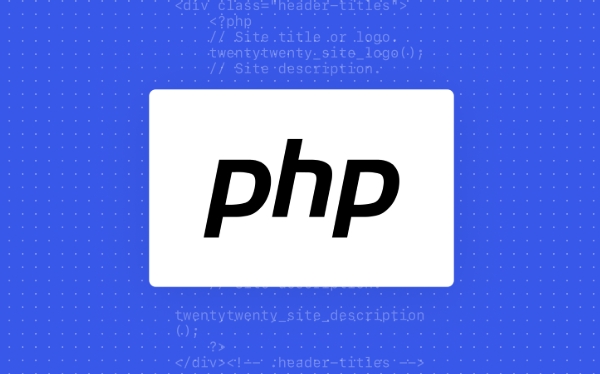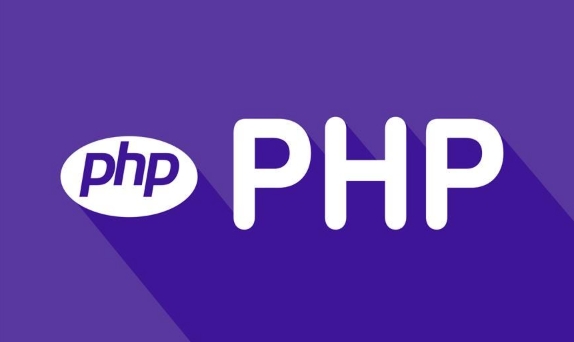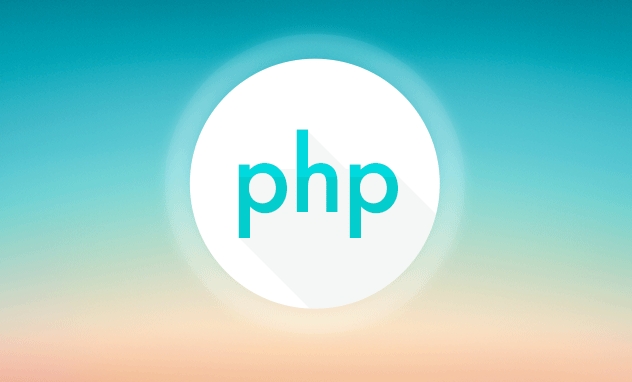 Backend Development
Backend Development
 PHP Tutorial
PHP Tutorial
 Beyond the LAMP Stack: PHP's Role in Modern Enterprise Architecture
Beyond the LAMP Stack: PHP's Role in Modern Enterprise Architecture
Beyond the LAMP Stack: PHP's Role in Modern Enterprise Architecture
Jul 27, 2025 am 04:31 AMPHP is still relevant in modern enterprise environments. 1. Modern PHP (7.x and 8.x) offers performance gains, strict typing, JIT compilation, and modern syntax, making it suitable for large-scale applications. 2. PHP integrates effectively in hybrid architectures, serving as an API gateway or orchestration layer alongside Go, Java, or Python services, and works with Docker, Kubernetes, and message brokers. 3. Enterprise-grade tooling like PHPUnit, PHPStan, Composer, and CI/CD pipelines are now standard, ensuring robust development, testing, and deployment practices. 4. PHP excels in rapid development for internal tools, content-heavy sites, and MVPs, offering cost efficiency and a low barrier to entry. Enterprises can modernize existing PHP systems incrementally, leveraging its strengths in speed, ecosystem, and integration without compromising architectural integrity, confirming PHP’s role as a strategic component in today’s enterprise technology stack.

PHP isn’t what it used to be — and neither is the enterprise landscape.

Once synonymous with the LAMP stack (Linux, Apache, MySQL, PHP), PHP was long seen as the go-to scripting language for small websites and early web applications. But in today’s enterprise architecture, where scalability, maintainability, and integration with modern tooling are non-negotiable, many assume PHP has been left behind. That assumption is outdated.
Here’s how PHP still plays a meaningful — and evolving — role in modern enterprise environments.

1. Modern PHP Is Not Legacy PHP
The PHP of today bears little resemblance to the loosely typed, inconsistent language of the early 2000s. Major upgrades — especially PHP 7.x and 8.x — brought:
- Significant performance improvements (up to 2–3x faster execution)
- Strict typing and better error handling
- JIT compilation (in PHP 8) for performance-critical workloads
- Modern syntax (e.g., match expressions, attributes, constructor property promotion)
These changes make PHP far more suitable for large-scale, mission-critical applications. Enterprises leveraging PHP today aren’t stuck in maintenance mode — they’re building robust, high-performance systems.

Frameworks like Laravel and Symfony have matured into full-stack solutions with built-in support for:
- Dependency injection
- Event-driven architecture
- Queue workers and task scheduling
- API-first development
Symfony, in particular, is widely used in enterprise settings (e.g., at Spotify in the early days, and still in use at major European enterprises) due to its modularity and long-term support (LTS) releases.
2. Integration, Not Isolation: PHP in Hybrid Architectures
Modern enterprise systems rarely rely on a single technology stack. Instead, they embrace polyglot architectures where different tools handle different responsibilities.
In this world, PHP excels as a service orchestrator or API gateway layer. For example:
- A Laravel app might expose REST/GraphQL APIs that aggregate data from microservices written in Go or Java.
- Symfony applications integrate with message brokers like RabbitMQ or Kafka for event-driven workflows.
- PHP services run alongside Node.js frontends or Python-based data pipelines, communicating via APIs or shared message queues.
PHP also integrates well with containerization and orchestration tools:
- Runs efficiently in Docker containers
- Deployable on Kubernetes with horizontal scaling via PHP-FPM and load balancing
- Works with service meshes like Istio when needed
This flexibility allows enterprises to retain PHP for business logic and web interfaces while offloading compute-heavy tasks to more suitable languages.
3. Enterprise-Grade Tooling and Practices Are Now Standard
One reason PHP was dismissed in enterprise circles was the lack of mature tooling. That’s changed.
Today, PHP developers use:
- PHPUnit for comprehensive testing
- PHPStan and Psalm for static analysis
- Composer for dependency management (similar to npm or Maven)
- Doctrine for ORM and database abstraction
- Monolog for structured logging
- OpenTelemetry and Sentry integrations for observability
CI/CD pipelines for PHP apps are now standard, with automated testing, code coverage, and deployment gates. Security scanning tools like RIPS or SonarQube help meet compliance requirements.
Moreover, Laravel Nova or custom admin panels built with Symfony provide enterprise-ready back-office interfaces — something often overlooked but critical for internal operations.
4. Where PHP Still Shines: Rapid Development and Cost Efficiency
While languages like Java, Go, or .NET dominate in high-throughput backend services, PHP remains a strong contender for:
- Internal tools and line-of-business applications
- Content-heavy websites with dynamic functionality
- MVPs and innovation projects needing fast turnaround
Its low barrier to entry, vast ecosystem, and strong community support make PHP ideal for teams that need to deliver value quickly without over-engineering.
For enterprises with existing PHP investments (many do), modernizing incrementally — rather than rewriting in another language — is often the smarter financial and operational decision.
Bottom Line
PHP may no longer be the default choice for greenfield enterprise systems, but it’s far from obsolete. With modern frameworks, solid tooling, and a shift toward integration over monolithic design, PHP continues to play a strategic role — especially in hybrid environments.
The key is not to see PHP as the stack, but as part of the stack.
Enterprises that recognize this can leverage PHP’s strengths — speed of development, ecosystem maturity, and cost efficiency — without sacrificing architectural rigor.
Basically, PHP isn’t running the whole show anymore — but it’s still a lead actor in the right scenes.
The above is the detailed content of Beyond the LAMP Stack: PHP's Role in Modern Enterprise Architecture. For more information, please follow other related articles on the PHP Chinese website!

Hot AI Tools

Undress AI Tool
Undress images for free

Undresser.AI Undress
AI-powered app for creating realistic nude photos

AI Clothes Remover
Online AI tool for removing clothes from photos.

Clothoff.io
AI clothes remover

Video Face Swap
Swap faces in any video effortlessly with our completely free AI face swap tool!

Hot Article

Hot Tools

Notepad++7.3.1
Easy-to-use and free code editor

SublimeText3 Chinese version
Chinese version, very easy to use

Zend Studio 13.0.1
Powerful PHP integrated development environment

Dreamweaver CS6
Visual web development tools

SublimeText3 Mac version
God-level code editing software (SublimeText3)

Hot Topics
 How to use PHP to build social sharing functions PHP sharing interface integration practice
Jul 25, 2025 pm 08:51 PM
How to use PHP to build social sharing functions PHP sharing interface integration practice
Jul 25, 2025 pm 08:51 PM
The core method of building social sharing functions in PHP is to dynamically generate sharing links that meet the requirements of each platform. 1. First get the current page or specified URL and article information; 2. Use urlencode to encode the parameters; 3. Splice and generate sharing links according to the protocols of each platform; 4. Display links on the front end for users to click and share; 5. Dynamically generate OG tags on the page to optimize sharing content display; 6. Be sure to escape user input to prevent XSS attacks. This method does not require complex authentication, has low maintenance costs, and is suitable for most content sharing needs.
 How to use PHP combined with AI to achieve text error correction PHP syntax detection and optimization
Jul 25, 2025 pm 08:57 PM
How to use PHP combined with AI to achieve text error correction PHP syntax detection and optimization
Jul 25, 2025 pm 08:57 PM
To realize text error correction and syntax optimization with AI, you need to follow the following steps: 1. Select a suitable AI model or API, such as Baidu, Tencent API or open source NLP library; 2. Call the API through PHP's curl or Guzzle and process the return results; 3. Display error correction information in the application and allow users to choose whether to adopt it; 4. Use php-l and PHP_CodeSniffer for syntax detection and code optimization; 5. Continuously collect feedback and update the model or rules to improve the effect. When choosing AIAPI, focus on evaluating accuracy, response speed, price and support for PHP. Code optimization should follow PSR specifications, use cache reasonably, avoid circular queries, review code regularly, and use X
 PHP creates a blog comment system to monetize PHP comment review and anti-brush strategy
Jul 25, 2025 pm 08:27 PM
PHP creates a blog comment system to monetize PHP comment review and anti-brush strategy
Jul 25, 2025 pm 08:27 PM
1. Maximizing the commercial value of the comment system requires combining native advertising precise delivery, user paid value-added services (such as uploading pictures, top-up comments), influence incentive mechanism based on comment quality, and compliance anonymous data insight monetization; 2. The audit strategy should adopt a combination of pre-audit dynamic keyword filtering and user reporting mechanisms, supplemented by comment quality rating to achieve content hierarchical exposure; 3. Anti-brushing requires the construction of multi-layer defense: reCAPTCHAv3 sensorless verification, Honeypot honeypot field recognition robot, IP and timestamp frequency limit prevents watering, and content pattern recognition marks suspicious comments, and continuously iterate to deal with attacks.
 PHP integrated AI intelligent picture recognition PHP visual content automatic labeling
Jul 25, 2025 pm 05:42 PM
PHP integrated AI intelligent picture recognition PHP visual content automatic labeling
Jul 25, 2025 pm 05:42 PM
The core idea of integrating AI visual understanding capabilities into PHP applications is to use the third-party AI visual service API, which is responsible for uploading images, sending requests, receiving and parsing JSON results, and storing tags into the database; 2. Automatic image tagging can significantly improve efficiency, enhance content searchability, optimize management and recommendation, and change visual content from "dead data" to "live data"; 3. Selecting AI services requires comprehensive judgments based on functional matching, accuracy, cost, ease of use, regional delay and data compliance, and it is recommended to start from general services such as Google CloudVision; 4. Common challenges include network timeout, key security, error processing, image format limitation, cost control, asynchronous processing requirements and AI recognition accuracy issues.
 PHP calls AI intelligent voice assistant PHP voice interaction system construction
Jul 25, 2025 pm 08:45 PM
PHP calls AI intelligent voice assistant PHP voice interaction system construction
Jul 25, 2025 pm 08:45 PM
User voice input is captured and sent to the PHP backend through the MediaRecorder API of the front-end JavaScript; 2. PHP saves the audio as a temporary file and calls STTAPI (such as Google or Baidu voice recognition) to convert it into text; 3. PHP sends the text to an AI service (such as OpenAIGPT) to obtain intelligent reply; 4. PHP then calls TTSAPI (such as Baidu or Google voice synthesis) to convert the reply to a voice file; 5. PHP streams the voice file back to the front-end to play, completing interaction. The entire process is dominated by PHP to ensure seamless connection between all links.
 How to use PHP to combine AI to generate image. PHP automatically generates art works
Jul 25, 2025 pm 07:21 PM
How to use PHP to combine AI to generate image. PHP automatically generates art works
Jul 25, 2025 pm 07:21 PM
PHP does not directly perform AI image processing, but integrates through APIs, because it is good at web development rather than computing-intensive tasks. API integration can achieve professional division of labor, reduce costs, and improve efficiency; 2. Integrating key technologies include using Guzzle or cURL to send HTTP requests, JSON data encoding and decoding, API key security authentication, asynchronous queue processing time-consuming tasks, robust error handling and retry mechanism, image storage and display; 3. Common challenges include API cost out of control, uncontrollable generation results, poor user experience, security risks and difficult data management. The response strategies are setting user quotas and caches, providing propt guidance and multi-picture selection, asynchronous notifications and progress prompts, key environment variable storage and content audit, and cloud storage.
 PHP realizes commodity inventory management and monetization PHP inventory synchronization and alarm mechanism
Jul 25, 2025 pm 08:30 PM
PHP realizes commodity inventory management and monetization PHP inventory synchronization and alarm mechanism
Jul 25, 2025 pm 08:30 PM
PHP ensures inventory deduction atomicity through database transactions and FORUPDATE row locks to prevent high concurrent overselling; 2. Multi-platform inventory consistency depends on centralized management and event-driven synchronization, combining API/Webhook notifications and message queues to ensure reliable data transmission; 3. The alarm mechanism should set low inventory, zero/negative inventory, unsalable sales, replenishment cycles and abnormal fluctuations strategies in different scenarios, and select DingTalk, SMS or Email Responsible Persons according to the urgency, and the alarm information must be complete and clear to achieve business adaptation and rapid response.
 How to use PHP to develop AI-driven advertising delivery PHP advertising performance optimization solution
Jul 25, 2025 pm 06:12 PM
How to use PHP to develop AI-driven advertising delivery PHP advertising performance optimization solution
Jul 25, 2025 pm 06:12 PM
PHP provides an input basis for AI models by collecting user data (such as browsing history, geographical location) and pre-processing; 2. Use curl or gRPC to connect with AI models to obtain click-through rate and conversion rate prediction results; 3. Dynamically adjust advertising display frequency, target population and other strategies based on predictions; 4. Test different advertising variants through A/B and record data, and combine statistical analysis to optimize the effect; 5. Use PHP to monitor traffic sources and user behaviors and integrate with third-party APIs such as GoogleAds to achieve automated delivery and continuous feedback optimization, ultimately improving CTR and CVR and reducing CPC, and fully implementing the closed loop of AI-driven advertising system.





